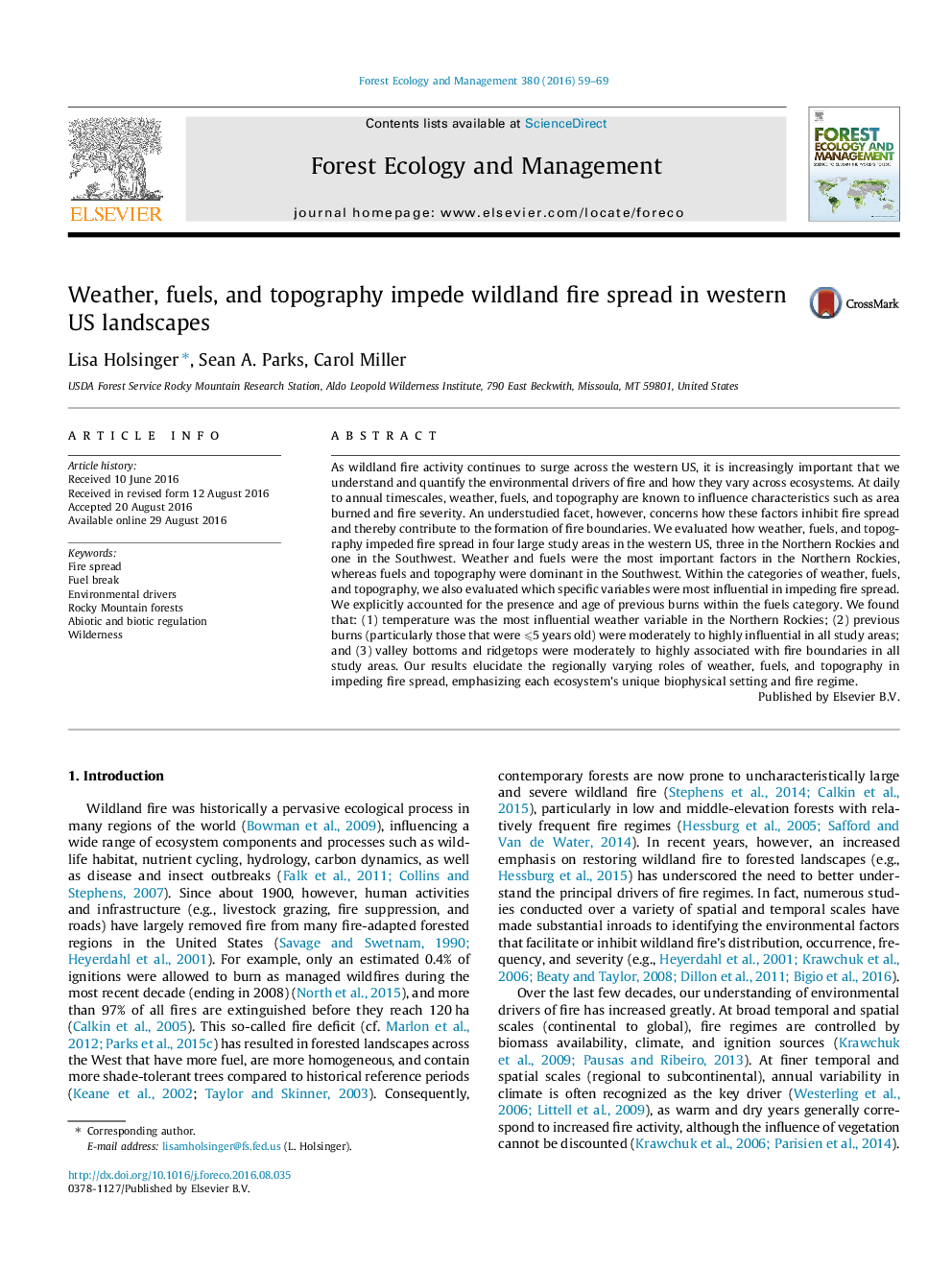| کد مقاله | کد نشریه | سال انتشار | مقاله انگلیسی | نسخه تمام متن |
|---|---|---|---|---|
| 4759661 | 1421378 | 2016 | 11 صفحه PDF | دانلود رایگان |
- Effects of weather, fuels and topography on impeding fire spread were studied.
- Weather and fuels were most important in the Northern Rockies study areas.
- Fuels and topography were highly influential in the Southwestern study area.
- Key variables were: temperature, previous burns, valley bottoms and ridgetops.
As wildland fire activity continues to surge across the western US, it is increasingly important that we understand and quantify the environmental drivers of fire and how they vary across ecosystems. At daily to annual timescales, weather, fuels, and topography are known to influence characteristics such as area burned and fire severity. An understudied facet, however, concerns how these factors inhibit fire spread and thereby contribute to the formation of fire boundaries. We evaluated how weather, fuels, and topography impeded fire spread in four large study areas in the western US, three in the Northern Rockies and one in the Southwest. Weather and fuels were the most important factors in the Northern Rockies, whereas fuels and topography were dominant in the Southwest. Within the categories of weather, fuels, and topography, we also evaluated which specific variables were most influential in impeding fire spread. We explicitly accounted for the presence and age of previous burns within the fuels category. We found that: (1) temperature was the most influential weather variable in the Northern Rockies; (2) previous burns (particularly those that were ⩽5 years old) were moderately to highly influential in all study areas; and (3) valley bottoms and ridgetops were moderately to highly associated with fire boundaries in all study areas. Our results elucidate the regionally varying roles of weather, fuels, and topography in impeding fire spread, emphasizing each ecosystem's unique biophysical setting and fire regime.
Journal: Forest Ecology and Management - Volume 380, 15 November 2016, Pages 59-69
